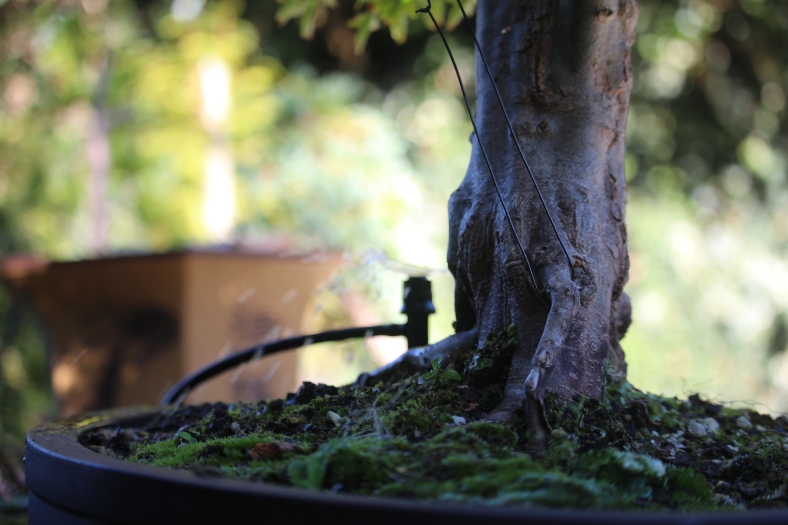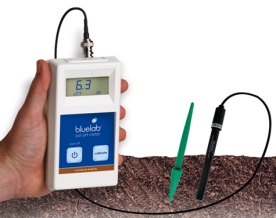Ask a room full of Bonsai artists about soil and you will probably get different perspectives from each and every one of them. Soil for Bonsai cultivation is widely discussed and opinions are easy to find. From those who can afford to import Akadama and other Japanese sourced mediums through to Cat litter soils and organic mixes, all serve a purpose. In the end it is probably better to talk about the “Growing Medium” rather than soil as some Bonsai trees grow in mixes that can hardly be classified as Soil when one goes with the “normal” definition of what soil is. Here in New Zealand we just refer to it as “dirt”, but that is probably not good English for what we use to grow our Bonsai in. One thing that is not very well considered when it comes to soil and soil types, is the pH of the soil for Bonsai.
Ph is a measure of the acidity and alkalinity of the soil and is expressed on a scale that goes from 0 to 14. ) is very acidic, 7 is neutral and 14 is very alkaline. Soil pH is largely determined by the type of rock or parent material that the soil originates from. Limestone for instance will produce soil that is more alkaline. Soils with a higher content of decomposing organic material normally lies on the acidic side.
The pH of the soil is important as it affects the control of the solubility of different minerals. Different minerals are available to plant roots at different pH levels. What is available and can dissolve at a low pH, will not be available at a high pH as the solubility of the mineral is effected. Soil pH also has an effect on soil structure and the activity of soil organisms.
Some plants do not have a big issue with pH levels, but others are very specific. In the  Bonsai world, Azaleas and Camellias could be a good example. These plants prefer a slightly acidic soil. Fruit trees also produce more fruit in slightly acidic soil. This is not a major consideration for Bonsai artists as Fruiting Bonsai are not necessarily grown for its fruit. As a whole, pH is something to be kept in mind for Bonsai artists, especially for those pH specific trees, but our larger concern should be for the drainage capacity of the soil. Here-in lies another challenge. Due to the free-draining characteristics of most Bonsai soils, it is very easy for minerals to dissolve in the water and be washed out of the soil. It is therefore important to fertilize the trees and to ensure that a good mineral supply is available.
Bonsai world, Azaleas and Camellias could be a good example. These plants prefer a slightly acidic soil. Fruit trees also produce more fruit in slightly acidic soil. This is not a major consideration for Bonsai artists as Fruiting Bonsai are not necessarily grown for its fruit. As a whole, pH is something to be kept in mind for Bonsai artists, especially for those pH specific trees, but our larger concern should be for the drainage capacity of the soil. Here-in lies another challenge. Due to the free-draining characteristics of most Bonsai soils, it is very easy for minerals to dissolve in the water and be washed out of the soil. It is therefore important to fertilize the trees and to ensure that a good mineral supply is available.
What do you water your trees with? Water you say. Yes, but not all water is created equally. Your water supply could contain different types of chemicals that can in turn be deposited in your Bonsai soil and over time, alter the pH of the soil. Areas where the air is highly polluted can acidify the rain water and this in turn can change the chemical composition of your soil. So, what to do?
Common sense and logic, although sometimes scarce, should prevail. Water your plants with what you have available. If it is rain water from an unpolluted source, you are winning Lotto. If it is town sourced, it could contain all sorts of things like fluoride. The main thing is to be aware of your water source and to act accordingly. Also know that regular watering will wash nutrients out, therefore fertilize and use mineral supplements. If you are worried or just inquisitive about the soil pH, get a digital tester or a testing kit and determine the pH. If there is a problem, it can be rectified by either a preventative strategy (like only use unpolluted rain water or do not use organic material in your growing medium) or use supplements that will get your soil to the ideal pH for the specific tree. My experience is that to not let pH become something that makes you lie awake at night, but to use the opportunity to get to know more about your tree, find out about its specific pH preferences and then adjust by either supplying minerals or changing your growing medium when needed.

Images are open source and the last one is from http://www.exoplexity.org.




